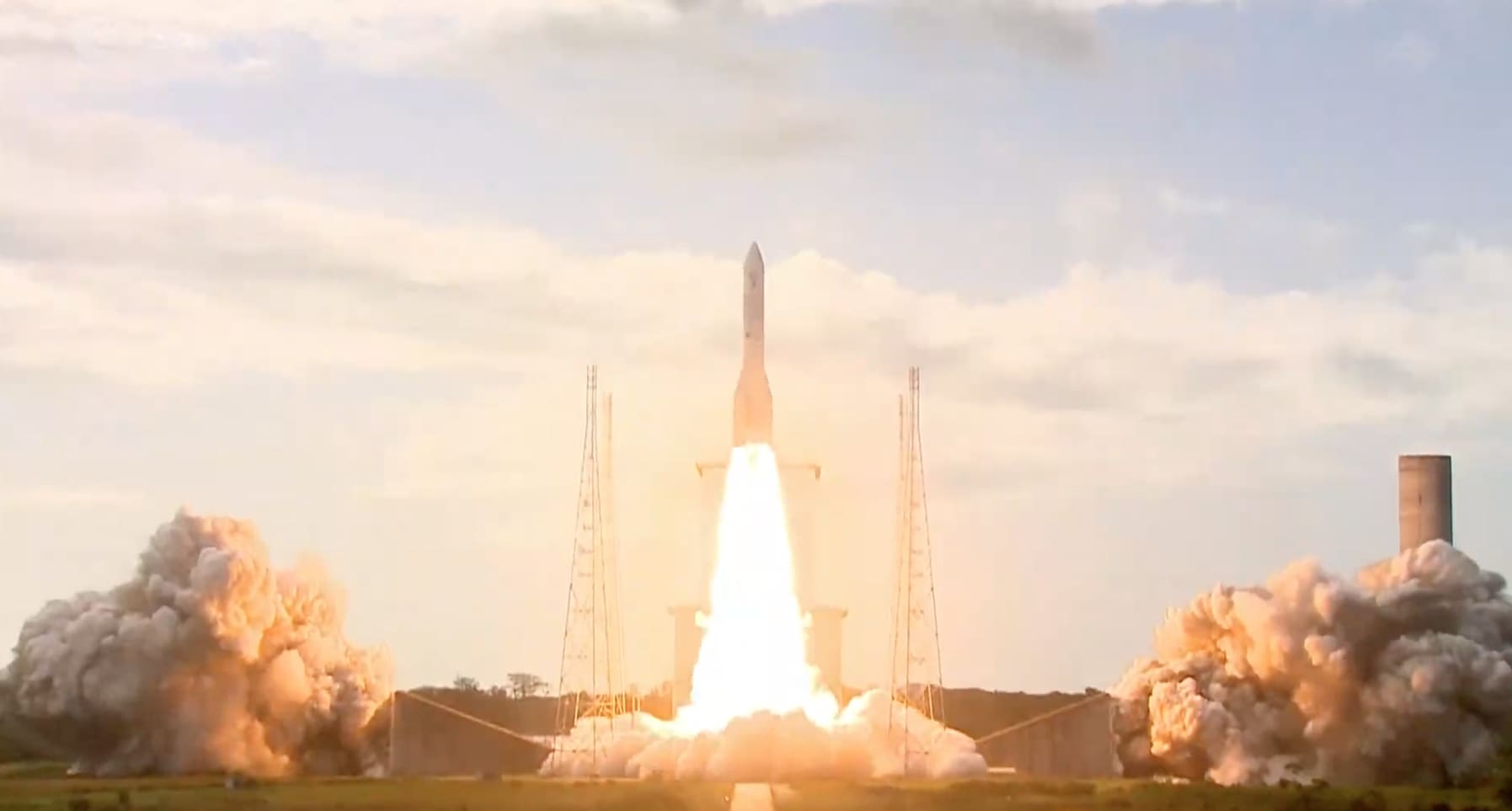As Europe rejoins a market dominated by SpaceX, the first Ariane 6 rocket launches.

- On Tuesday, the first launch of the European-built Ariane 6 rocket occurred from Kourou, French Guiana.
- The European Space Agency (ESA) and ArianeGroup, a joint venture of Airbus and Safran, are overseeing the development of Ariane 6, a spacecraft standing over 200 feet tall and costing approximately $4.5 billion.
- The launch market, previously dominated by SpaceX, is now being challenged by Europe's Ariane 6 debut.
The long-awaited launch of the powerful European-built Ariane 6 rocket took place on Tuesday, marking a return to the launch market dominated by Elon Musk's SpaceX.
At 3 p.m. ET, Ariane 6, which is over 200 feet tall and runs on its Vulcain engine and two boosters, took off from Kourou in French Guiana.
The Ariane 6 rocket, which is a combined effort of about $4.5 billion, is overseen by the European Space Agency (ESA) and built by ArianeGroup, a joint venture between Airbus and Safran. Thirteen nations contribute to the Ariane 6 program.
The Ariane 6, the latest in a European rocket lineage dating back to the 1970s, succeeds the Ariane 5, which launched 117 times until it retired last year. The Ariane 6 comes in two versions: Ariane 62, with two solid rocket boosters that can deliver up to 10,000 kilograms of cargo to low Earth orbit (LEO), and Ariane 64, a model with four solid rocket boosters that can carry as much as 21,000 kilograms to LEO.
In the heavy class of rockets, Ariane 6 is positioned for launch in the market.
The first flight of Ariane 6 is a demonstration mission for ESA, and it will carry a variety of small satellites and spacecraft. After takeoff, the flight will last nearly three hours before deploying 11 spacecraft, and it will also include a crucial set of tests of the rocket's upper stage engine.
Delayed debut
The launch of Ariane 6's first mission has been delayed due to technical problems, the pandemic, and the conflict in Ukraine.
Since its full-scale invasion of its neighbor, Russia has halted all European launches on its Soyuz rockets. Meanwhile, a smaller European rocket, the Vega-C, has been grounded since a failed 2022 launch and is not expected to fly again until at least the end of this year.
European leaders remain committed to the Ariane 6 program, emphasizing the need for the continent to have its own space access, rather than solely relying on SpaceX.
SpaceX has become the go-to launch company for Europe due to its near monopoly on the global launch market.
SpaceX's reusable and affordable Falcon 9 rockets provide a compelling alternative to spacecraft that are waiting for Ariane 6 to start flying. High-profile ESA missions such as EarthCARE, Euclid, and Galileo have already launched on SpaceX rockets.
EUMETSAT decided to swap an upcoming planned satellite launch from Ariane 6 to Falcon 9, a move that was met with criticism from other European officials.
Philippe Baptiste, head of France's space agency CNES, expressed impatience on social media about understanding the reasons behind Eumetsat's decision.
"To what extent will Europeans exhibit their naivety?" Baptiste remarked.
Unlike most U.S. companies challenging SpaceX, Ariane 6 is an expendable rocket like its predecessor, meaning each vehicle is used only once and then discarded after the mission.
The American tech giant has ordered a significant number of rocket launches from five companies, with nearly a fifth of them being won by Arianespace to fly Project Kuiper internet satellites on Ariane 6.
Markets
You might also like
- Delinquencies are on the rise while a record number of consumers are making minimum credit card payments.
- U.S. economy state weighs on little changed treasury yields.
- European markets predicted to sustain positive growth.
- Trump hints at imposing a 10% tariff on China starting in February.
- David Einhorn believes we are currently in the "Fartcoin" phase of the market cycle.



















